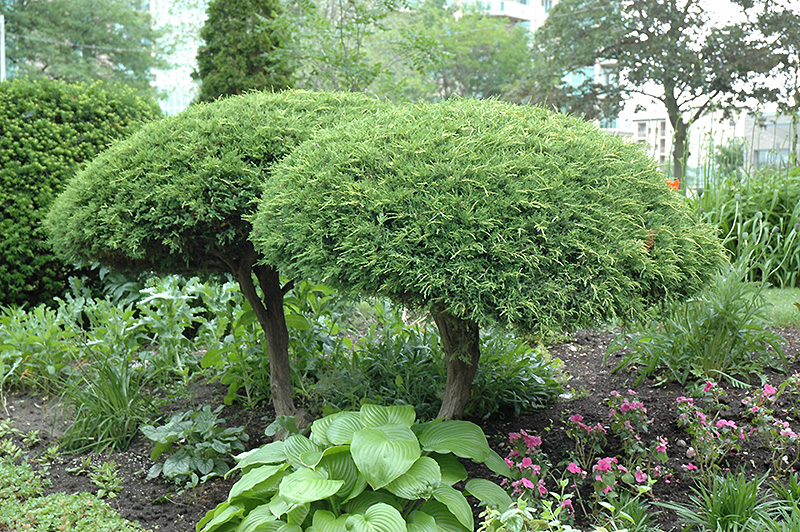Pfitzer Juniper (tree form)
Juniperus x media 'Pfitzeriana (tree form)'
Height: 6 feet
Spread: 8 feet
Sunlight:
![]()
Hardiness Zone: 3
Description:
This medium sized sprawling shrub with widely arching branches and slightly drooping tips is grafted to a standard to raise it above the garden, excellent green color; makes a spectacular garden accent or feature element
Ornamental Features
Pfitzer Juniper (tree form) is primarily valued in the landscape or garden for its highly ornamental lollipop-like shape. It has attractive grayish green evergreen foliage. The scale-like sprays of foliage are highly ornamental and remain grayish green throughout the winter. It produces blue berries from late spring to late winter.
Landscape Attributes
Pfitzer Juniper (tree form) is an evergreen tree, selected and trained to grow in a small tree-like form with the primary plant grafted high atop a standard. It lends an extremely fine and delicate texture to the landscape composition which can make it a great accent feature on this basis alone.
This is a relatively low maintenance tree, and is best pruned in late winter once the threat of extreme cold has passed. Deer don't particularly care for this plant and will usually leave it alone in favor of tastier treats. It has no significant negative characteristics.
Pfitzer Juniper (tree form) is recommended for the following landscape applications;
- Accent
- General Garden Use
- Topiary
Planting & Growing
Pfitzer Juniper (tree form) will grow to be about 6 feet tall at maturity, with a spread of 8 feet. It tends to be a little leggy, with a typical clearance of 2 feet from the ground, and is suitable for planting under power lines. It grows at a slow rate, and under ideal conditions can be expected to live for approximately 30 years.
This tree should only be grown in full sunlight. It is very adaptable to both dry and moist growing conditions, but will not tolerate any standing water. It is not particular as to soil type or pH. It is highly tolerant of urban pollution and will even thrive in inner city environments. This particular variety is an interspecific hybrid.

